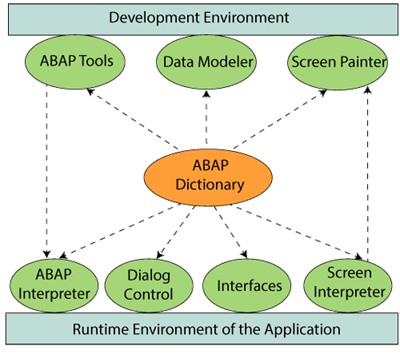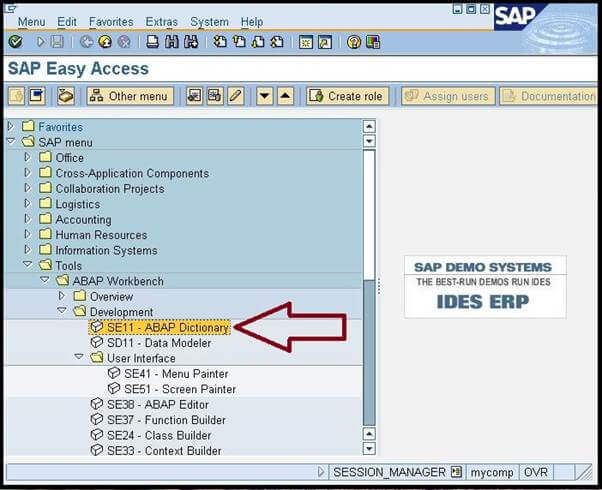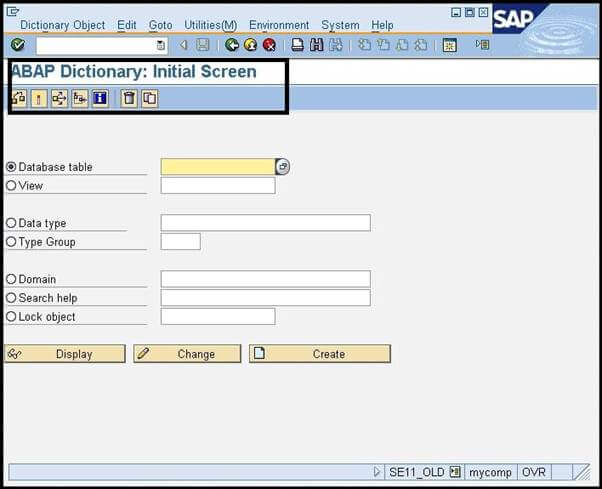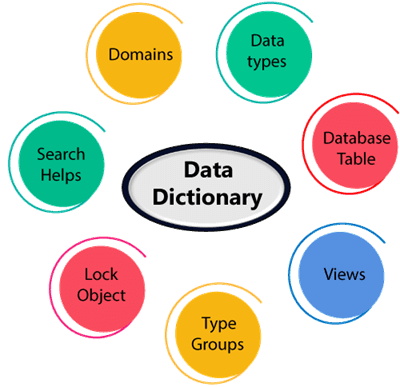SAP ABAP Dictionary | Data Dictionary Overview
- ABAP dictionary is one of the most important tools of the ABAP workbench, which is used to create and manage the metadata (data about data).
- It is used to store the descriptions of data definitions and also known as Data Dictionary or
- With the help of DDIC, we can create and maintain user-defined types, such as data elements, structures, table types, etc.
- DDIC is the central storage area, which allows users to maintain the repository objects related to the particular database and contains the central description of all the data used in the SAP system without any redundancy. The data within the DDIC is integrated, consistent, and secured.
- As a view of the SQL, the ABAP dictionary handles the DDL (Data Definition Language) part of SQL that contains the commands, such as CREATE Table, DROP Table, ALTER Table, Create index, etc.
- It defines the logical structure of the objects (tables and views) and also tells how these objects are mapped to the given RDBMS.
- The DDIC is completely integrated with the development and run time environment of the SAP system. Consider the below image:

The integrated means, if we made any change to the data definition, it will appear in all related ABAP Programs, function modules, screens, and menus.
Note: If you want to modify a database table, then change the table definition in DDIC. Do not change the table or anything at the RDBMS level else, and it can produce application errors as DDIC definition can't update itself.
How to begin the ABAP Dictionary Initial Screen?
We can reach to the Initial Screen of ABAP Dictionary in two ways:
- By following the menu path, which is given below:
Consider the below image:

- By entering the transaction code SE11 in the command filed of SAP Easy Access. The ABAP dictionary initial screen looks like the below image:

The fields given in the screen are discussed below.
Repository Objects of ABAP Data Dictionary
In ABAP Dictionary, we will find the below object types:

All these objects can be divided into two main sections:
- Basic Repository Objects: These are the basic repository objects using these objects; other applications/ objects can be created. These are:
- Tables and Structures
- Data Elements
- Domains
- Aggregated Objects: These are the objects that consist of several components. These are:
- Views
- Search Help
- Lock Object.
The short description of the dictionary objects is given below:
- Database table: Using this field, we can create any custom table, or can display any existing table by entering the name of the table. The custom table name must be started with the letter "z or y," and its length should be up to 16 characters. These tables are independent of the underlying database in the ABAP data dictionary. The database table is of three types in SAP:
- Transparent Table
- Pooled Table
- Cluster Table
- View: The view option is similar to the database table, but it only contains the table structure, not any data. It is like a virtual table that physically not contain any type of data.
- Data type: The data type option is used to create the user-defined data types in ABAP Dictionary, such as data elements, structures, and tables.
- Type group: It is used to define the group of different data types that we use in our program.
- Domain: The domain in the ABAP dictionary describes the technical attributes of a field, such as data type field and
- Search help: This option allows us to create the help document for the user so that the user can know what values should be filled into the input field values. It can be accessed using the F4
- Lock Object: Since SAP does not allow the access of multiple users simultaneously, but this option allows us to synchronize the access of multiple users simultaneously. It does this by creating a local or lock object. SAP provides three types of lock objects-
- Read Object
- Write lock object
- Enhanced lock object.
Note: We will explore the above objects in further topics.
|



 For Videos Join Our Youtube Channel: Join Now
For Videos Join Our Youtube Channel: Join Now











